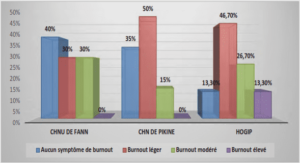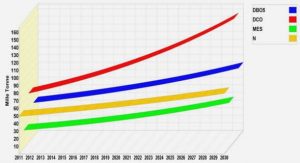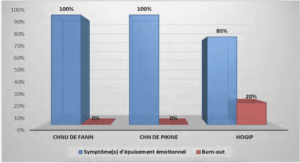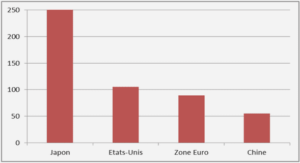Lyapunov techniques for a class of hybrid systems and reset controller syntheses for continuous-time plants
Analysis for a class of hybrid systems
Hybrid dynamical systems exhibit characteristics of both continuous-time and discrete-time dynamical systems and their solutions can cover a wide range of behavior. In [40], powerful tools based on Lyapunov conditions are provided to accomplish stability analysis and the fact that Lyapunov functions do not guarantee existence or completeness of solutions is deeply and clearly investigated and explained. Nevertheless, the problem of accounting for all the solutions to a hybrid system becomes even more challenging whenever a performance bound has to be established. In this context we mention a good work in [65], where Lyapunov-based conditions for verifying L2 stability for a certain class of hybrid systems are presented. Also in [88], a rigorous study on hybrid control schemes embedding a FORE controller is clearly provided. In this chapter, we address the same class of hybrid systems in [65], which is a particular case of (1.3), and we relax the Lyapunov conditions in [65]. We emphasize that most of the hybrid closed-loop scheme in the literature arising from the interconnection of a linear plant with a hybrid controller are included in the class of hybrid systems addressed in [65] and in this chapter. Finally, we anticipate that most of the hybrid control schemes in this dissertation fit such a class of interest.
A homogeneous class of hybrid systems
In Chapter 1, general notions and a general hybrid system representation were given. Now, we want to focus on a particular class of hybrid systems with the goal to provide LMI-based tools 14 Chapter 2. Analysis for a class of hybrid systems to establish stability and performance analysis. To this aim, the class under consideration has features which allow us to use LMI tools and moreover as motivation, we also show that such a class is wide and embeds several promising hybrid control systems frequently occurring in the literature (see, for instance, [6, 28, 64, 70, 78]). The analysis results that we present in this chapter are referred to a certain class of hybrid systems that can be represented as ( x˙ = Ax + Bw τ˙ = 1 − dz τ ρ (x, τ ) ∈ C x + = Gx τ + = 0 (x, τ ) ∈ D z = Czx + Dzww y = Cx + Dww (2.1a) where x ∈ R n is the state, τ ∈ [0, 2ρ] with ρ > 0 is a dwell-time logic, w ∈ R nw is an exogenous signal, z ∈ R nz is the performance output, y ∈ R ny is the measured output and C and D are C = {(x, τ ) : x ∈ F or τ ∈ [0, ρ]} = {(x, τ ) : x ∈ F} ∪ {(x, τ ) : τ ∈ [0, ρ]}, (2.1b) D = {(x, τ ) : x ∈ J and τ ∈ [ρ, 2ρ]} = {(x, τ ) : x ∈ J } ∩ {(x, τ ) : τ ∈ [ρ, 2ρ]}, (2.1c) with F and J symmetric cones defined by the matrix M = M⊤ as F = n x ∈ R n : x ⊤Mx ≤ 0 o , (2.1d) J = n x ∈ R n : x ⊤Mx ≥ 0 o . (2.1e) Since C ∪ D is forward invariant and no finite escape times are possible due to the linear flow map, it follows that all maximal solutions are complete and we will refer to asymptotic stability rather than pre-asymptotic stability (see [39, 40] for details)1 . In the sequel we denote the flow intervals as [ti , ti+1] with i ∈ Z≥0, where ti and ti+1 are the instants in which a jump occurs (see Chapter 1 for more details on the hybrid time domain). Note that (2.1) is less general than (1.3). First, the flow and jump map of (2.1) are linear in the x-dimension and the exogenous signal w is injected only into the flow map. Moreover, the flow and jump sets are conic in the x subspace and a dwell-time logic is embedded. The next section has the purpose of listing some interesting properties related to system (2.1). The dwell-time logic τ presents the same autonomous dynamics described in Chapter 1, and the state space (x, τ ) is divided into flow and jump sets, respectively C and D (note that no exogenous signal w is injected here). In particular, the τ -component of C and D ensures that the dwell-time condition (1.12) is satisfied, whereas the x-component of C and D is projected into the flow set F and the jump set J . Figure 2.1 shows that sets F and J are conic subsets of R n and F ∩ J (represented with a dash dot dotted line) is non empty. Remark 2.1. It is important to stress the following facts: • if M = 0, then we have F ≡ J ≡ R n , namely both F and J correspond to the entire state space on the x-direction; 1Notice also that (2.1a) and C ∪ D = R n × [0, 2ρ] satisfy the Basic Assumptions of [39,40] so that solutions exist for all initial conditions of x and for all initial values in [0, 2ρ] of the dwell time τ . 2.2. A homogeneous class of hybrid systems 15 • if M < 0 (namely, M negative definite since M = M⊤), we have F ≡ R n , namely F corresponds to the entire state space on the x-direction, whereas J contains only the origin; • if M > 0 (namely, M positive definite since M = M⊤), we have J ≡ R n , namely J corresponds to the entire state space on the x-direction, whereas F contains only the origin. ⋆ Despite the particular cases listed in Remark 2.1, matrix M in (2.1d) and (2.1e) is, in general, indefinite (see [50, p. 397]), giving a more standard conic shape similar to the one illustrated in Figure 2.1. Sets F and J make a regional separation of the x-state space and the general desired property is that the x-component of all the trajectories flow when x ∈ F and jump when x ∈ J . Nevertheless due to the dwell time, the solutions2 ξ = (x, τ ) to (2.1) might behave differently. The next remark states some properties related to the trajectories ξ of (2.1). Remark 2.2. It is important to stress that system (2.1) satisfies the following properties: i. ti+1 − ti ≥ ρ, for all i ∈ Z≥1. In particular, if ti+1 − ti > ρ, i ∈ Z≥1, then x(t, i) ∈ F for all t ∈ [ti + ρ, ti+1]; ii. only in the interval [t0, t1], we have t1 −t0 ≥ ρ−τ (t0, 0) and so it might happen that t1 −t0 < ρ (note that this might also imply that t1 = t0 if τ (t0, 0) ≥ ρ). Nevertheless, x(t, 0) ∈ F for all t ∈ [max{t0, t0 + ρ − τ (t0, 0)}, t1]; iii. flow may occur in J due to the dwell-time logic: • x ∈ J and τ < ρ, thus the system must flow. Among all the cases that may occur, we mention: 1. Initial Condition. For instance, we might have ξ(t0, 0) = (x(t0, 0), τ (t0, 0)) ∈ J × [0, ρ), so that x(t, 0) ∈ J for some t ∈ [t0, max{t0, t0 + ρ − τ (t0, 0)}];
Relaxed jump region and its ǫ-inflated set
In this chapter, we want to provide sufficient conditions to establish performance t-L2 bounds for system (2.1) relying on a Lyapunov function defined only in the x-state space. By proceedings similarly to [65], we want to establish if there exists a non-empty set of possible dwell-time parameter ρ that guarantees the stability property of system (2.1), as formally stated in the following problem. Problem 2.1. Consider system (2.1) with A, B, G, M, Cz, Dzw, C and Dw given. Provide sufficient conditions based on a Lyapunov function x 7→ V (x) to establish if there exists a dwelltime parameter ρ > 0 such that: • the set A := {0} × [0, 2ρ] ⊂ R n × [0, 2ρ] is globally asymptotically stable for (2.1) with w = 0; • an estimation of the t-L2 gain of (2.1) from w to z is assessed. ◦ Due to the fact that the dwell time affects the x-component of the trajectories only through the sets C and D, we want to describe the x-component of the trajectories of system (2.1) via a Lyapunov function x 7→ V (x) (instead of (x, τ ) 7→ W(x, τ )), taking into account the dwell-time effects upon the trajectories. In particular, we want to certify the existence of a dwell-time parameter ρ > 0 to system (2.1), which guarantees the performance t-L2 bound. The motivation of this approach (carried out also in [65]) is in the fact that we want to provide convex conditions to be checked with SDP tools. Whenever the conditions are expressed only through a function x 7→ V (x), convex conditions can be obtained by selecting V (x) quadratic. This is not possible if the trajectories ξ = (x, τ ) of (2.1) are studied via a Lyapunov function (x, τ ) 7→ W(x, τ ), because the dwell time is in general injected through an exponential function3 . To establish stability property for system (2.1) via a function x 7→ V (x), we need to consider the effects induced by the dwell time upon the trajectories of (2.1). The next remark highlights a few aspects in this sense.
Remark 2.4. Theorem 2.1 does not guarantee that the set of suitable ρ (namely, (ρ, ρ)) is non empty. In particular, whenever ρ is strictly positive (namely, a growth at jumps is admitted) there is no guarantee a priori that ρ < ρ. Therefore, whenever ρ > ρ, the set (ρ, ρ) is empty. On the other hand, since ρ ⋆ 1 , ρ ⋆ 2 and ρ ⋆ 3 are strictly positive, then ρ > 0 and whenever ρ = 0, the set of suitable ρ is certainly non empty. Moreover, we emphasize that ϕe(·), ϕ1(·) and ϕ(·) are class K∞ functions and so also their inverses, which in particular, depend either on γ or on ǫ. Therefore, since ρ is the minimum of these last class K∞ functions, it might be possible to enlarge ǫ and/or γ in order to guarantee ρ < ρ. Notice that only enforcing larger values of ǫ the feasibility of the conditions in Theorem 2.1 might be compromised, whereas γ can be selected slightly larger a posteriori (accordingly to (2.7) and (2.8a)). ⋆ Conditions in (2.7) are needed in item 2 of Theorem 2.1 to guarantee that ρ ⋆ 2 exists strictly positive. Although it may look complicated at first sight, it is enough to compare a posteriori γ¯ with the square root in the second hand term of the latter in (2.7). If γ¯ is larger, then we can select γ = ¯γ, otherwise we select γ larger but arbitrarily close to the value of the square root in the second condition in (2.7) according also to the value of ρ to guarantee (if possible) that the set (ρ, ρ) is non empty (see Remark 2.4). Remark 2.5. Let us now list some important properties of Theorem 2.1: 1. if F ≡ F ˜ , ρ = 0 and Dzw = 0, item 2 of Theorem 2.1 recovers the statement in [65, Theorem 1]. In this sense, [65, Theorem 1] can be considered as a corollary of item 2 of Theorem 2.1; 2. if Dzw = 0 then from (2.7) we have trivially γ = ¯γ; 3. consider F˜ ǫ with ǫ = ∞ (namely, F˜ ǫ ≡ R n ), then (2.6b) holds globally and therefore even though Dzw 6= 0, condition (2.7) is not needed and γ = ¯γ. In particular, the fact that (2.6b) holds globally, makes conditions (2.6d) and (2.6e) useless for both items of Theorem 2.1. Moreover, the set (ρ, ρ) can always be selected non empty and the proof of Lemma 2.1 changes so that the analysis in Case 1 can be carried out as in Case 2; 4. item 1 of Theorem 2.1 establishes global asymptotic stability of set {0} × [0, 2ρ]. Indeed to achieve global exponential stability, we should require a further decrease term in (2.6b). In particular, the term a3V (x) in (2.6b) is needed to compensate the eventual growth at jumps due to ρ. Nevertheless whenever in (2.6b), due to the strict inequality, we can require a term (a3+ζ)V (x) with ζ > 0 (see [53, Lemma 4.3]), then global exponential stability of set {0}×[0, 2ρ] can be established even when ρ 6= 0. On the other hand, whenever ρ = 0, item 1 of Theorem 2.1 establishes global exponential stability of set {0} × [0, 2ρ
List of Symbols |




